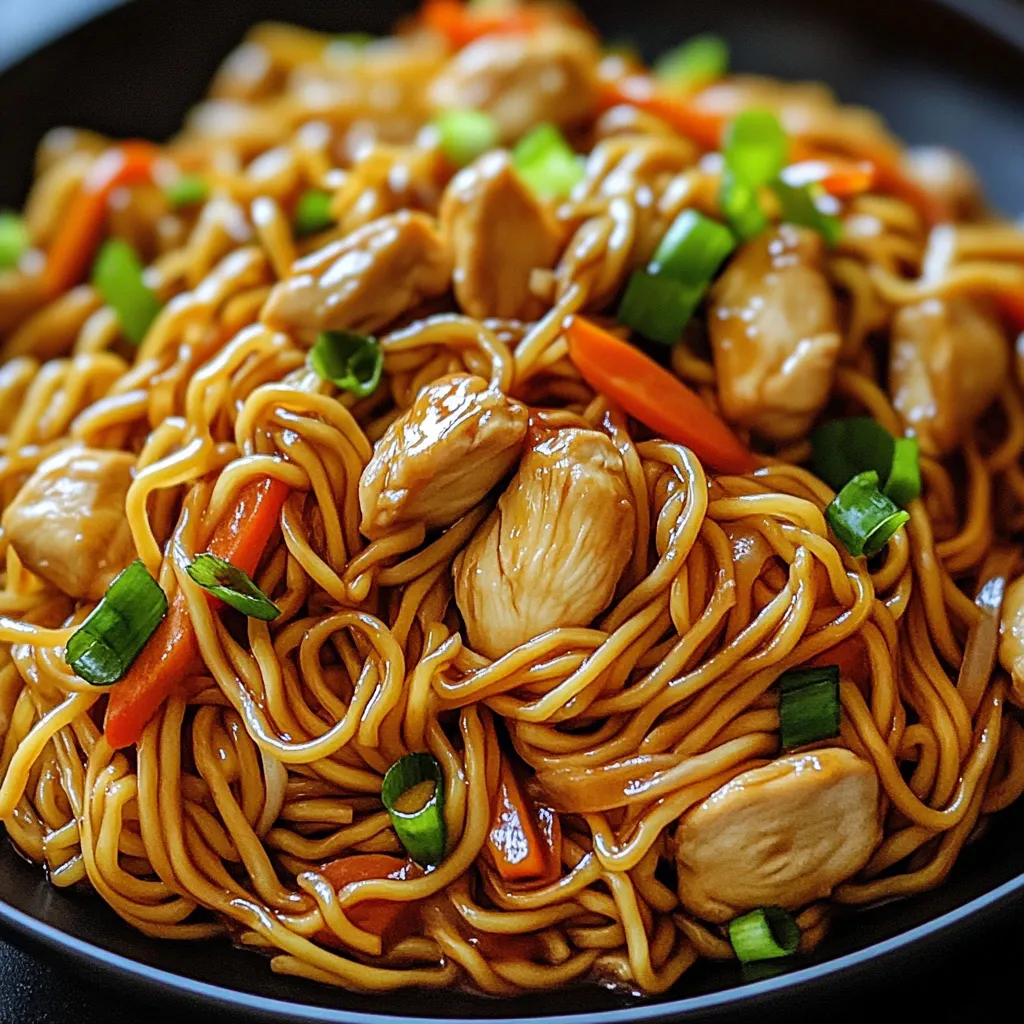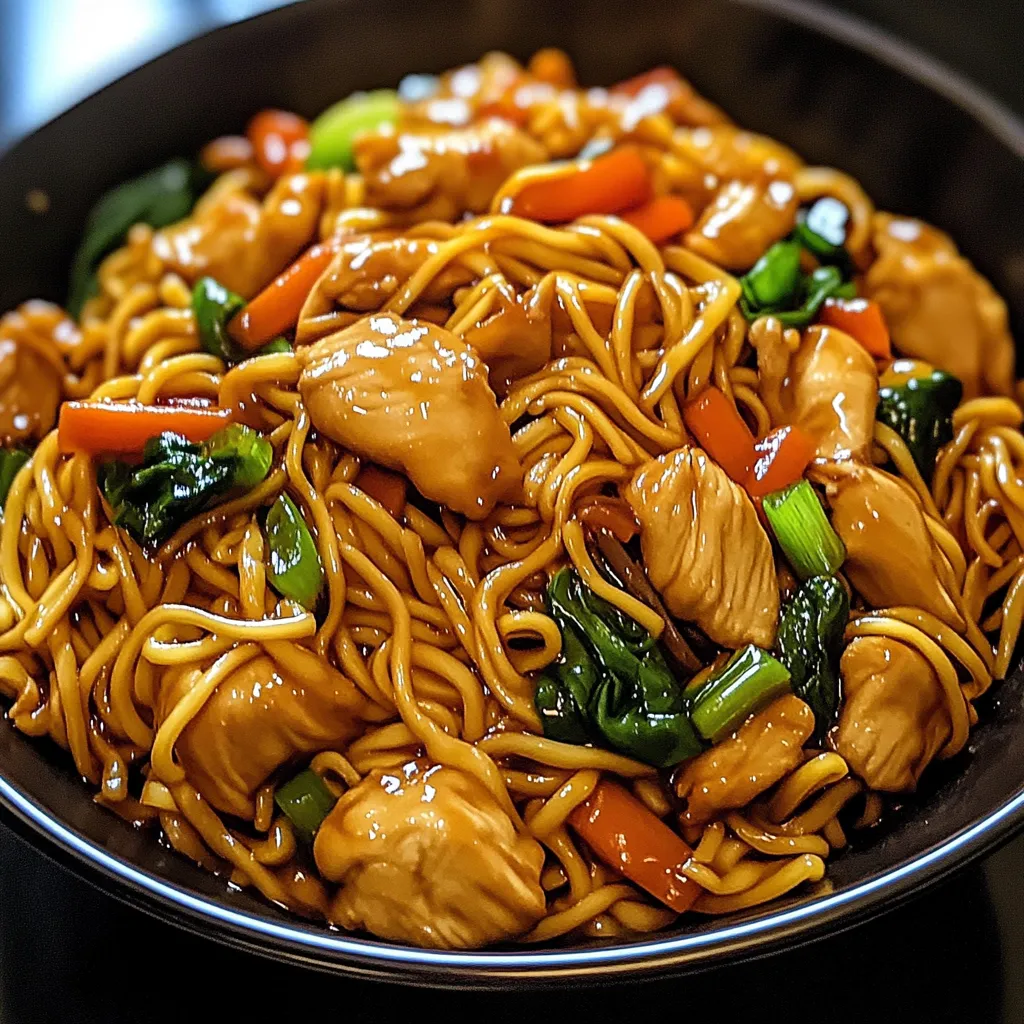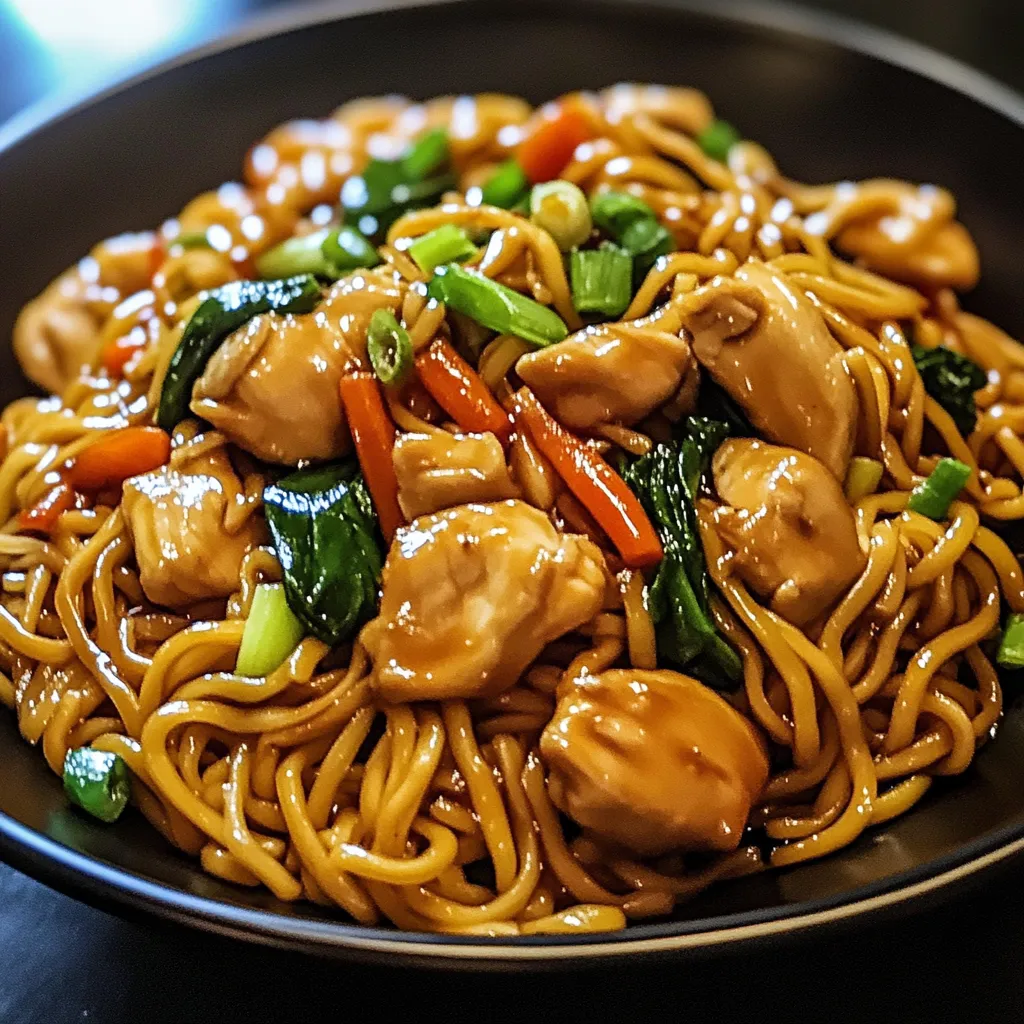 Save
Save
Tender chicken strips, crisp veggies, and noodles get tossed in a glossy, flavor-packed sauce that nails salty, sweet, and umami all at once. Skip the takeout—this chow mein delivers big restaurant vibes with stuff you can find right at your regular grocery store. Soy sauce, oyster sauce, and sesame oil do the heavy lifting here, making a quick weeknight dinner taste like you got it from your favorite spot downtown.
I came up with this dish after way too many letdowns from takeout in my hometown. After lots of trial and error, I finally landed on a version that totally hits the spot and really tastes like the real deal. My husband tends to only rave about restaurant food, but this one won him over—it's made regular appearances at our dinner table ever since. Even my kids chow down, veggies and all, without a fuss.
Irresistible Sauce Must-Haves
- Brown Sugar: Rounds out all those bold flavors with just a hint of caramel—darker is better here for deeper taste
- Chicken Broth: Adds just enough richness for a more layered taste—store-bought's fine if that's what you have
- Oyster Sauce: Packs a punch of classic, can't-miss Chinese flavor and adds real depth
- Fresh Garlic and Ginger: These two work behind the scenes, giving the whole dish a fragrant kick—make sure to chop them tiny so the flavors spread evenly
- Low-Sodium Soy Sauce: This one’s the base—go for low-sodium to keep it from getting too salty without losing the umami
- Cornstarch: Helps the sauce hug the noodles—just mix with cool stuff first so it doesn’t get weird and clumpy
- Rice Vinegar: Cuts through everything with a burst of tang—skip the swaps, since nothing else really brings that gentle sweetness
- Sesame Oil: A splash at the end brings out a toasty aroma and nutty background—don’t cook it too long or it’ll lose its magic
Noodle Game Strong
- Final Fresh Touch:
- After taking things off the stove, toss in chopped green onions and give it all another quick mix. Let it all sit for a minute so that sauce grabs onto every noodle before piling it onto plates.
- Incorporate Noodles:
- Now’s the time for noodles. Add them in and gently toss everything so the noodles get a full coat of sauce. Don’t overdo it—about a minute is all it takes so they stay just right.
- Combine All Elements:
- Next, toss your cooked chicken back in with the veggies. Pour the sauce around the inside edge of the pan (not straight on top), bubble everything for a couple minutes 'til it turns thick, glossy, and soaks in.
- Prepare The Noodles:
- Get your noodles ready while the veggies cook—boil eight ounces as the package says, but stop before they're too soft. Rinse them under cold water if you’re not using them right away so they don’t stick.
- Layer The Vegetables:
- When the ginger and garlic are ready, add in a cup of shredded cabbage, a sliced bell pepper, and a sliced onion. Crank the heat and toss it nonstop—let them soften for about three minutes, but keep ‘em kinda crisp.
- Enhance With Aromatics:
- Move the chicken to a clean plate, pour a fresh splash of oil into that hot pan, and add a tablespoon each of grated ginger and three minced garlic cloves. Stir till they smell awesome—just half a minute is perfect.
- Cook The Protein:
- Chop a pound of chicken breast into thin pieces (against the grain). Heat up oil on medium-high in a big pan or wok, toss the chicken in so it isn't all crowded, and leave it alone for two minutes to get those golden edges before stirring.
- Prepare The Sauce:
- Mix together half a cup broth, one tablespoon brown sugar, one teaspoon rice vinegar, a teaspoon each of sesame oil and cornstarch, three tablespoons soy sauce, and two tablespoons oyster sauce. Keep whisking till smooth and lump-free—that way it’ll thicken up just right when you cook it.
 Save
Save
My grandma used to say that real chow mein has to taste like it got that smoky flavor from a screaming hot pan. I'd watch her in the kitchen, flipping everything with these quick, sharp wrist moves—it was amazing. My stove isn't quite up to her old-school wok flame, but with a splash of oyster sauce and high heat, this dish still brings back those mouthwatering smells from her tiny kitchen.
Tasty Serving Ideas
Make things fun and cozy by putting chow mein in a big bowl for everyone to share, with chopsticks and little plates so folks can serve themselves. Try a chilled cucumber salad with sesame seeds and rice vinegar to brighten things up next to the noodles. If you’re going all out, throw some veggie spring rolls or dumplings on the table to round it out. Stash some chili oil, sriracha, or soy sauce nearby so everyone can tweak their plate just the way they want.
Yummy Ways To Mix It Up
Switch things around to match your mood or what’s in the fridge. If you’ve got shrimp, swap it for the chicken and cook it just until it turns pink so it doesn’t go rubbery. Going meatless? Press tofu cubes with paper towels to get rid of extra water, then marinate in soy sauce before tossing into the pan. Want a chewier bite? Use thick lo mein noodles instead—just cook ’em a little longer. If you love spice, sprinkle in some chili flakes with the aromatics or squeeze chili garlic sauce into the mix for a nice kick.
Smart Storage Tips
Want leftovers that still taste awesome? Make sure it’s cooled completely before you load it into containers—do this within an hour, so it stays fresh and safe. Store it in the fridge for up to three days, and if there’s extra sauce, keep that separate to avoid soggy noodles. To heat it back up, splash a spoonful of water over the top and microwave covered, giving it a stir after a minute. For best results, toss it in a hot skillet with a bit of oil and stir till warmed through. If you’re prepping ahead, keep the parts separate and combine everything right before you eat for the best texture ever.
 Save
Save
Learning how to get that tasty Chinese takeout flavor at home turned into my cooking obsession, and this is my go-to dish after lots of testing. It’s not about any one part—it’s the way everything comes together: juicy chicken, crisp veggies, chewy noodles, and that shiny sauce coating every bite. Friends and family always ask me to make this, and I love showing them the tricks. Seeing them smile when they finally taste really good chow mein makes all the experimenting worth it.
Recipe FAQs
- → How is chow mein different from lo mein?
- Chow mein noodles are boiled briefly then stir-fried for a slightly crunchy texture, while lo mein noodles are fully cooked and mixed into the dish for a softer feel.
- → Is there a way to make this gluten-free?
- Sure! Swap regular soy sauce for tamari or coconut aminos, and use gluten-free chow mein or rice noodles. Check that your oyster and hoisin sauces are gluten-free too.
- → What’s a good substitute for oyster sauce?
- If you’re out of oyster sauce, use more hoisin or a mix of soy sauce, sugar, and a dash of Worcestershire sauce. For vegetarians, try mushroom-based oyster sauce.
- → How do I stop the noodles from sticking?
- After cooking, rinse the noodles with cold water and toss them in a little oil if you're not adding them to the stir-fry right away. Avoid overcooking since they'll cook a bit more in the pan.
- → Can I prep any parts ahead of time?
- Absolutely! Mix the sauce a few days beforehand and refrigerate it. Chop up all veggies and slice the chicken a day early to simplify cooking.
- → What other vegetables can I throw in?
- Mushrooms, broccoli, snap peas, water chestnuts, bell peppers, baby corn—you name it! Use whatever veggies you've got handy.
